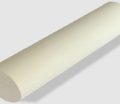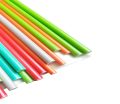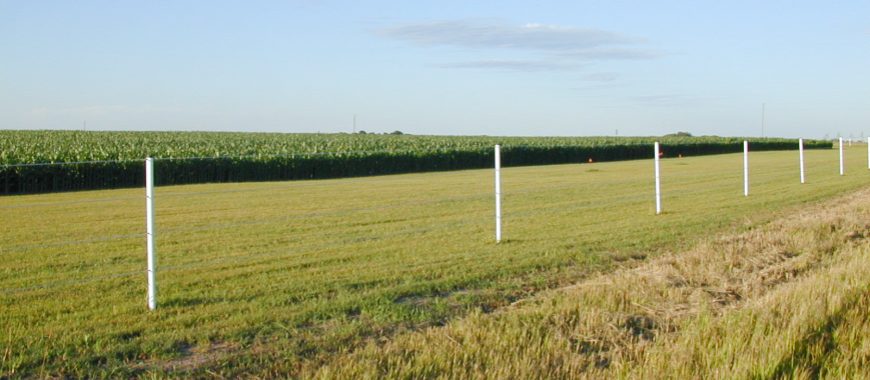
Fiberglass fence posts are an excellent choice for property fencing due to their durability, lightweight structure, and low-maintenance requirements. Fiberglass Fence Posts are permanent high-tensile fences used in temporary enclosures for conductor support and spacing. These posts are designed to resist weather-related damage, such as rust or rot, making them a long-lasting solution. Homeowners, farmers, and gardeners often seek reliable fencing materials, and fiberglass fence posts provide a versatile option that suits a variety of needs. Additionally, fiberglass rods can be used for reinforcement, further enhancing the strength and stability of the fence posts. This guide aims to help readers understand the advantages of fiberglass fence posts and make informed decisions based on specific requirements. By considering the benefits outlined in this article, users will be equipped to choose the best fencing option for their property, ensuring long-term effectiveness and ease of installation.
Simplifying Your Life: Key Functionalities
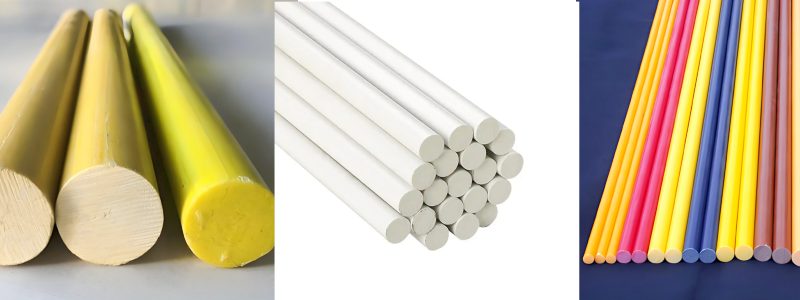
| Attributes | Details |
|---|---|
| Place of Origin | Hebei, China |
| Brand Name | GangLong Fiberglass |
| Product Name | Fiberglass Rods |
| Material | Fiberglass |
| Application | Architecture, Engineering |
| Technology | Pultrusion |
| Surface Treatment | Smooth or Customized |
| Size | Customizable |
| Length | Customizable |
| Thickness | Customizable |
| Color | Customizable |
| Diameter | Customizable |
| Shape | Customizable |
| Quality | High Quality |
| Features | Waterproof, Durable, Anti-corrosion, Fireproof, Lightweight and High Strength |
| Processing Services | Punching, Cutting, Bending, Forming, Welding |
| After-sales Service | Online Technical Support |
Advantages of Fiberglass Fence Posts
Durability and Resistance to Weather, Rot, Rust, and Insect Damage
One of the primary benefits of fiberglass fence posts is their remarkable durability. These posts are highly resistant to various environmental factors that can affect other materials. For instance, wood posts are prone to rot over time, while metal posts may rust when exposed to moisture. In contrast, fiberglass is inherently resistant to both rot and rust. Fiberglass step in posts share these same advantages, making them an ideal choice for areas that experience heavy rainfall, snow, or humidity. Additionally, fiberglass does not attract insects, meaning it won’t suffer from damage caused by termites or other pests. This durability ensures that the fence posts, including fiberglass step-in posts, remain strong and reliable for years, even in harsh outdoor conditions.
Lightweight Yet Strong, Making Transportation and Installation Easier
Despite their strength, fiberglass fence posts are incredibly lightweight compared to traditional materials like wood or metal. This lightweight nature makes them easier to transport, even in large quantities, which can save time and reduce transportation costs. Furthermore, because they are light, fiberglass fence posts are much easier to handle during installation. Whether installing a fence on your own or with a team, these posts can be quickly and easily placed into the ground. Their lightweight nature does not compromise their structural integrity; fiberglass fence posts are strong enough to withstand pressure from animals, wind, and other forces.
Non-Conductive, Making It Ideal for Electric Fencing
Another key advantage of fiberglass fence posts is that they are non-conductive. This characteristic makes them an ideal choice for electric fencing applications. Since fiberglass does not conduct electricity, it provides an added layer of safety when used to support electric wires. Electric fences require insulators to prevent current from traveling through the posts, but with fiberglass fence posts, this issue is minimized or eliminated altogether. These posts ensure that the electric current is confined to the fence wires, offering a reliable fencing solution for livestock containment or security purposes, especially when paired with fiberglass rods electrical for enhanced insulation.
Low-Maintenance and Long-Lasting Compared to Traditional Materials
In terms of maintenance, fiberglass fence posts offer a distinct advantage over traditional materials like wood and metal. Wood fences require regular treatment to prevent rot and insect infestation, while metal posts need protective coatings to avoid rust. Fiberglass fence posts, however, require minimal maintenance. Once installed, they do not need frequent inspections or treatments, saving time and money over the long term. Their natural resistance to environmental wear means that fiberglass fence posts can last for many years with little attention. This longevity makes them a cost-effective option for property owners looking for durable and low-maintenance fencing solutions.
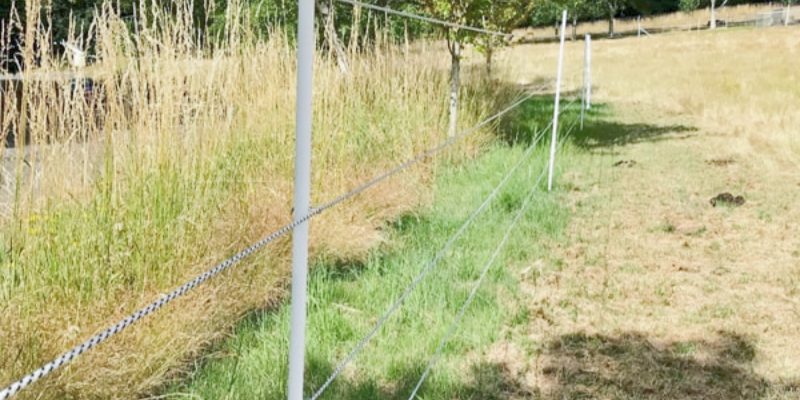
Size of Fiberglass Fence Posts
Fiberglass fence posts are a popular choice for a variety of applications due to their durability, lightweight nature, and resistance to environmental factors such as rot, rust, and UV damage. When discussing the size of fiberglass fence posts, several dimensions and factors come into play. Here is a detailed breakdown:
1. Length
Fiberglass fence posts are available in a range of lengths to accommodate different fencing needs:
- Short Posts (2 to 4 feet): Typically used for garden fencing, temporary barriers, or low-height fencing applications.
- Medium Posts (5 to 7 feet): Suitable for residential fences, livestock enclosures, or decorative fencing.
- Tall Posts (8 to 10+ feet): Designed for high-security fencing, large agricultural enclosures, or industrial applications.
The length you choose depends on the height of the fence and the depth required for proper anchoring in the ground. As a general rule, at least 1/3 of the post’s length should be buried for stability.
2. Diameter or Cross-Section
Fiberglass fence posts come in various diameters or cross-sectional dimensions:
- Small Diameter (3/8 to 1 inch): Common for lightweight or temporary fencing, such as electric fences.
- Medium Diameter (1 to 2 inches): Suitable for residential or general-purpose fencing.
- Large Diameter (2+ inches): Ideal for heavy-duty applications, such as perimeter security fences or areas prone to strong winds.
Fiberglass posts can also have different shapes, including round, square, or T-shaped profiles, depending on the intended use.
3. Wall Thickness
The wall thickness of hollow fiberglass posts contributes to their strength and durability:
- Thin Walls (1/8 inch or less): Lightweight and cost-effective, used for temporary or light-duty fencing.
- Medium Walls (1/8 to 1/4 inch): Suitable for standard applications where moderate strength is required.
- Thick Walls (1/4 inch or more): Designed for heavy-duty or high-stress environments.
4. Customizable Sizes
One of the advantages of fiberglass is its flexibility in manufacturing. Custom sizes can be produced to meet specific project requirements, including unique lengths, diameters, or wall thicknesses.
By carefully considering these dimensions and factors, you can select the right fiberglass fence posts for your specific needs.
Average Space of Fiberglass Fence Posts
The average spacing of fiberglass fence posts depends on the type of fence, its purpose, and the environmental conditions. Here is a detailed breakdown of typical post spacing:
General Guidelines for Post Spacing
- Average Spacing:
Fiberglass fence posts are typically spaced 6 to 12 feet apart.
This spacing balances structural integrity and cost efficiency, but the exact distance depends on the type of fence and application.
Factors Influencing Post Spacing
Fence Type
- Electric Fences:
Posts are usually spaced 8 to 12 feet apart, as the wire itself doesn’t require much support. Line posts can be farther apart because of intermediate supports like insulators. - Livestock Fencing:
For cattle or horse enclosures, spacing is generally 10 to 12 feet, though closer spacing (6 to 8 feet) may be used for added stability in areas with high wind or heavy animal pressure. - Garden or Decorative Fences:
Posts are typically spaced 6 to 8 feet apart for better aesthetics and support for lightweight fencing materials like mesh or lattice. - Security or High-Wind Fences:
In areas exposed to strong winds or where security is critical, posts are placed 4 to 6 feet apart for maximum stability.
Environmental Conditions
- Wind Loads:
In windy areas, post spacing should be reduced to prevent sagging or failure. Spacing of 4 to 6 feet is common in such cases. - Terrain:
On uneven ground or slopes, posts may need to be closer together to maintain the desired fence height and tension.
Fence Material and Design
- Wire Fencing:
Wire fences (e.g., barbed or smooth wire) allow for wider spacing, usually 8 to 12 feet, with tensioners and stays for intermediate support. - Panels or Rails:
For solid materials like wooden rails or mesh panels, posts are spaced 6 to 8 feet apart to ensure proper support.
Special Applications
- Corner and End Posts:
These posts bear more tension and need to be placed closer to the next post, usually 3 to 4 feet apart from braces or anchors. - Gate Posts:
Gate posts require additional support and are spaced to accommodate the gate size, often reinforced with bracing.
Summary of Common Spacing Ranges
| Fence Type | Average Spacing |
|---|---|
| Electric Fences | 8–12 feet |
| Livestock Fences | 10–12 feet |
| Decorative/Garden Fences | 6–8 feet |
| Security/Wind-Exposed | 4–6 feet |
By adjusting the spacing based on these factors, you can optimize the performance and longevity of fiberglass fence posts for your specific application.
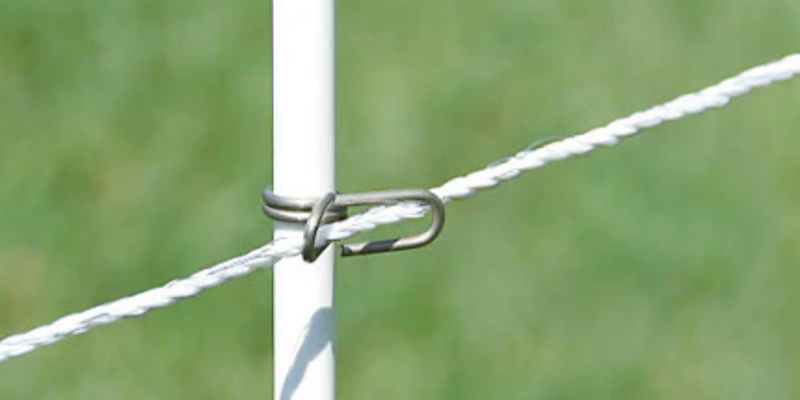
Types of Fiberglass Fence Posts
8 ft Fiberglass Fence Posts
The 8 ft fiberglass fence posts are commonly used for taller fencing applications, especially in agricultural settings. These posts are ideal for creating perimeter fences to contain livestock such as cattle or horses. The height of the 8 ft fiberglass fence posts ensures that larger animals are securely contained within the fenced area. These posts are also suitable for areas where wildlife management is necessary, preventing animals from crossing into restricted zones. Their strength and height make them an excellent choice for fencing large properties that need reliable, durable barriers.
5 ft Fiberglass Fence Post
For smaller-scale applications, the 5 ft fiberglass fence post is the perfect solution. These shorter posts are typically used in garden fencing or to mark property boundaries. Gardeners often choose 5 ft fiberglass fence posts to support plant trellises or to create protective barriers around vegetable beds and flower gardens. These posts provide sufficient height to deter animals like rabbits or deer from entering garden spaces while remaining easy to install and manage. The lightweight design also makes these posts suitable for quick boundary setups where shorter fencing is needed.
Pre Drilled Fiberglass Fence Posts
The pre drilled fiberglass fence posts offer an innovative solution for faster and more efficient installation. These posts come with pre-drilled holes, allowing for quick attachment of fencing materials such as wires or boards. For individuals looking to install an electric fence, the pre drilled fiberglass fence posts eliminate the need for additional drilling, saving time and effort. Whether used for livestock enclosures or property boundaries, these posts streamline the setup process and ensure a secure and stable fence.
3/8” Fiberglass Fence Post
The 3/8” fiberglass fence post is a lightweight option suitable for temporary or semi-permanent fencing projects. These thinner posts are commonly used in situations where a fence is needed for a limited period, such as setting up temporary enclosures for animals or creating event boundaries. Due to their small diameter, the 3/8” fiberglass fence post is easy to handle and install. Despite its lightweight design, it offers adequate strength for temporary fencing needs and can be removed or relocated without difficulty.
Fiberglass fence posts offer numerous advantages over traditional fencing materials, from their durability and resistance to weather and pests to their lightweight and non-conductive properties. With various types available, including 8 ft fiberglass fence posts, 5 ft fiberglass fence posts, pre drilled fiberglass fence posts, and 3/8” fiberglass fence posts, property owners have a wide range of options to suit their specific fencing needs. These posts are easy to install, require minimal maintenance, and provide long-lasting, reliable performance for both residential and agricultural applications.
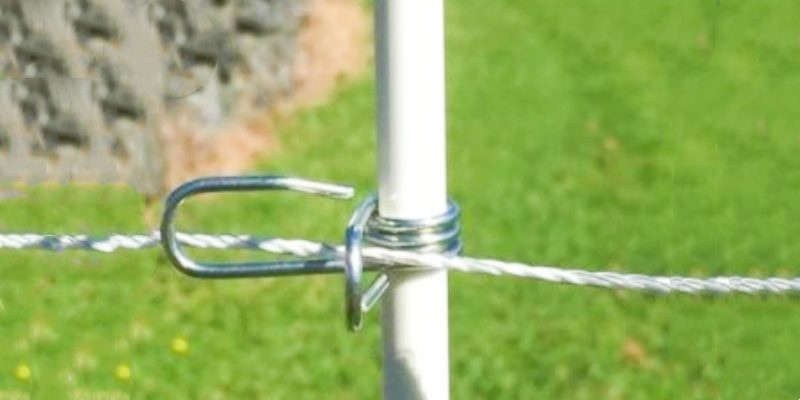
Fiberglass Fencing Solutions for Long-Lasting Outdoor Protection
Key Factors When Choosing Fiberglass Fence Posts
When selecting fiberglass fence posts for your property, it’s essential to consider various factors that influence their effectiveness and longevity. Each fencing project has unique requirements, and the right choice will depend on the purpose of the fence, environmental conditions, and the terrain where the posts will be installed. Below are key factors to keep in mind when choosing fiberglass fence posts.
Purpose of the Fence: Livestock, Garden Boundary, or Electric Fence
The primary purpose of your fence will significantly influence the type and size of fiberglass fence posts you need. For example, if you are fencing a large area for livestock, taller and stronger posts will be required to provide stability and prevent animals from escaping. Livestock fences, particularly fiberglass cattle fencing, typically use 8 ft fiberglass fence posts to create a secure barrier. In contrast, if you are looking to build a garden fence, shorter 5 ft fiberglass fence posts may suffice. For electric fences, it’s crucial to select posts that are non-conductive, as fiberglass posts inherently are. This makes them a perfect choice for electric fencing applications where the posts will support live wires.
Environmental Factors: Wind, Snow, and Sun Exposure
Environmental conditions play a critical role in determining the durability of fiberglass fence posts. If you live in a region that experiences high winds, you’ll need posts that can withstand strong gusts without bending or breaking. In areas with heavy snowfall, consider choosing thicker posts or driving them deeper into the ground to prevent them from becoming unstable under the weight of snow. Additionally, constant sun exposure can affect some fencing materials, but fiberglass fence posts are designed to resist UV rays, making them a durable choice in sunny climates. It’s essential to match the post size and installation method to the environmental conditions to ensure long-term fence performance.
Terrain and Soil Conditions: Affecting Post Length, Diameter, and Installation Technique
The type of terrain and soil on your property is another crucial factor when choosing fiberglass fence posts. For rocky or uneven terrain, longer posts may be necessary to ensure they can be securely installed. In sandy or loose soil, you might need to use concrete or specialized driving techniques to keep the posts stable. The diameter of the post also matters; thicker posts are more suitable for rough terrain or areas prone to soil shifting. Understanding your soil type will help you determine the best installation method, ensuring that your fiberglass fence posts remain sturdy and functional.
Fiberglass Fence posts : Installation and Maintenance Tips
Preparation Steps for Proper Post Alignment and Placement Using Guide Wires
Before installing fiberglass fence posts, it’s important to prepare the site properly to ensure the posts are aligned and evenly spaced. Begin by marking the locations where each post will be placed, ensuring consistent spacing between them. Using a guide wire or string is a helpful way to keep the posts straight, especially for long fences. This ensures that the fence remains visually appealing and structurally sound. Once the locations are marked, dig or drive the posts into the ground according to the installation method suitable for your terrain and soil type.
Methods for Installing Posts Based on Soil Type and Fence Style
The method of installing fiberglass fence posts depends largely on the type of soil and the style of fence you are constructing. In areas with hard or rocky soil, posts can be driven into the ground using a post driver or similar tool. This method is quick and efficient for solid and stable terrain. In softer or loose soil, it may be necessary to set the posts in concrete to provide extra stability, especially for taller 8 ft fiberglass fence posts. For temporary or semi-permanent fences, lighter posts like the 3/8” fiberglass fence post can be easily pounded into the ground using a mallet. Each installation method should be tailored to the specific needs of the soil and fence type.
Regular Inspections to Ensure Longevity and Performance of Your Fiberglass Posts
After the fence is installed, regular maintenance checks are essential to ensure that the fiberglass fence posts continue to perform well over time. Inspect the posts periodically for any signs of shifting, especially after storms or strong winds. Make sure that posts remain firmly in place, as loose posts can weaken the entire structure of the fence. For electric fences, it’s important to check that the posts are maintaining proper tension in the wires and that no insulators are damaged. While fiberglass fence posts are low-maintenance, routine inspections will help catch any issues early and extend the life of your fence.
Choosing the right fiberglass fence posts requires careful consideration of several factors, including the purpose of the fence, environmental conditions, and terrain. Proper installation and regular maintenance are key to ensuring that the fence remains sturdy and functional for years. By selecting posts that match your specific needs, whether for livestock, gardens, or electric fencing, and following best practices for installation, you can achieve a long-lasting, reliable fence with minimal upkeep.
Fiberglass Fence Posts Price
The price of fiberglass fence posts varies based on factors such as size, design, quantity, and supplier. Here’s a detailed overview to help you understand the pricing landscape:
Price Range by Size and Design
- Standard Posts:
- Dimensions: Common diameters include 3/8 inch (approximately 10 mm) and 1/2 inch (approximately 12 mm), with lengths ranging from 4 to 5 feet (about 1.22 to 1.52 meters).
- Approximate Price: $0.92 to $1.12 per piece.
- Example: A 3/8 inch diameter, 4-foot long fiberglass fence post may cost around $0.92 per piece.
- Specialized Posts:
- Features: Posts with additional components like metal points for easy ground insertion or built-in insulators for electric fencing.
- Approximate Price: $1.00 to $1.50 per piece.
- Example: A fiberglass fence post equipped with a metal point and insulators might be priced at approximately $1.20 per piece.
Bulk Purchasing and Wholesale Prices
- Bulk Orders:
- Minimum Order Quantities (MOQ): Suppliers often set MOQs, such as 1,000 pieces, for wholesale pricing.
- Discounts: Purchasing in large quantities can lead to reduced prices per unit.
- Example: Ordering 5,000 pieces may lower the price to around $0.84 per piece.
Factors Influencing Price
- Customization:
- Color and Length: Custom colors or lengths may increase costs due to specialized production requirements.
- Additional Features: Incorporating elements like UV-resistant coatings or reinforced tips can also affect pricing.
- Supplier Location:
- Domestic vs. International: Sourcing from international suppliers, such as those in China, may offer lower base prices but could involve higher shipping costs and longer delivery times.
Considerations for Buyers
- Shipping Costs:
- International Orders: Be aware of potential shipping fees, import duties, and longer delivery times when ordering from overseas suppliers.
- Quality Assurance:
- Supplier Reputation: Research suppliers to ensure product quality and reliability.
- Samples: Request samples before placing large orders to verify product specifications.
Fiberglass fence posts are a cost-effective and durable option for various fencing needs. Prices typically range from $0.92 to $1.50 per piece, depending on size, design, and order quantity. Purchasing in bulk and selecting standard sizes can lead to more economical pricing. Always consider additional costs such as shipping and customization when planning your purchase.
Fiberglass Privacy Fence Solutions for Modern Homes
Comparison with Other Fencing Materials
When choosing fencing materials, it’s essential to compare different options to determine which one best fits your needs. Fiberglass fence posts offer several advantages compared to traditional materials like wood, steel, and vinyl. Below are key factors to consider when evaluating the differences between these materials in terms of durability, cost, maintenance, and overall performance.
Durability: Fiberglass vs. Wood, Steel, and Vinyl
Durability is a critical factor in fencing, as posts are constantly exposed to various weather conditions. Fiberglass fence posts stand out due to their resistance to rot, rust, and insect damage. Wood, on the other hand, is susceptible to rot, especially in wet or humid climates. Additionally, wood is prone to insect infestations, which can significantly reduce its lifespan. Steel posts are strong but are vulnerable to rust and corrosion over time, especially in moist or salty environments. While vinyl posts offer good weather resistance, they can become brittle and crack under extreme temperature changes. In contrast, fiberglass fence posts maintain their integrity under harsh conditions, making them an ideal long-term solution for outdoor fencing.
Cost Comparison: Fiberglass vs. Traditional Materials
When considering cost, fiberglass fence posts may have a higher initial investment compared to wood or vinyl posts. However, the long-term savings are significant due to their durability and low maintenance requirements. Wood posts need frequent treatment and replacement, which adds to their overall cost over time. Steel posts also require protective coatings to prevent rust, increasing maintenance costs. Vinyl posts, while less expensive upfront, may need replacement or repairs sooner due to cracking or fading. Fiberglass fence posts are designed to last for many years without needing expensive repairs or treatments, making them a cost-effective choice in the long run.
Maintenance: Fiberglass Requires Minimal Upkeep
In terms of maintenance, fiberglass fence posts offer a clear advantage. Wood posts require regular sealing, painting, or staining to protect against rot and insect damage. Steel posts must be inspected regularly to prevent rust, especially in humid or coastal areas. Vinyl posts need occasional cleaning to maintain their appearance, and they can suffer damage from impacts or extreme weather. In contrast, fiberglass fence posts require very little maintenance. Their natural resistance to weathering, pests, and corrosion ensures that they remain in excellent condition for years with minimal effort. A simple periodic inspection is usually enough to keep fiberglass fence posts in top shape.
Weather Resistance: Fiberglass Outperforms in Harsh Conditions
One of the key advantages of fiberglass fence posts is their superior weather resistance. Unlike wood, which can warp, rot, or crack in extreme temperatures, fiberglass maintains its structural integrity in both hot and cold climates. Steel posts may rust when exposed to moisture, leading to structural weakness over time. Vinyl, although resistant to moisture, can become brittle in cold weather and may warp in extreme heat. Fiberglass fence posts are engineered to withstand temperature fluctuations, UV rays, and moisture, making them the perfect choice for areas with challenging weather conditions, much like the durability found in products such as a fiberglass hot tube.
Environmental Impact: Fiberglass Offers a Sustainable Solution
When it comes to environmental impact, fiberglass fence posts are an eco-friendly option. Wood posts, while biodegradable, contribute to deforestation and require chemical treatments to prevent decay, which can be harmful to the environment. Steel production is energy-intensive and results in significant carbon emissions. Vinyl is derived from petroleum products and is not biodegradable, contributing to plastic waste. Fiberglass fence posts, on the other hand, are made from sustainable materials and have a long lifespan, reducing the need for frequent replacements and minimizing their environmental footprint.
Fiberglass Sucker Rods Fence Post
What Are Fiberglass Sucker Rods Fence Post
A fiberglass sucker rods fence post is a specialized type of fencing post designed for heavy-duty applications. Sucker rods, traditionally used in the oil and gas industry to help pump oil from wells, offer durable construction and unique properties, making them an excellent choice for fencing in demanding environments. Fiberglass sucker rods fence posts, made with high-strength fiberglass materials, provide unparalleled resistance to stress and wear. As a result, they are increasingly popular for agricultural, industrial, and even residential fencing, thanks to their strength and versatility in various fiberglass fencing materials.
Durability and Versatility for Various Applications
The durability of fiberglass sucker rods fence post makes them ideal for fencing projects that require extra strength and longevity. These posts can withstand significant pressure without bending or breaking, which is especially important for areas with heavy livestock or harsh environmental conditions. Unlike wood or steel posts, fiberglass sucker rods fence post are resistant to rot, rust, and corrosion, ensuring they last much longer in outdoor environments. Their versatility allows them to be used for a variety of fencing needs, from securing livestock on farms to providing durable boundary fences in industrial areas.
Ideal for High-Stress Fencing Applications
The design and strength of fiberglass sucker rods fence post make them particularly well-suited for high-stress applications. For example, farms that contain large or strong animals like cattle or horses often face challenges with standard fencing materials that can bend or break under pressure. Fiberglass rod post provides the necessary strength to withstand the force exerted by these animals, ensuring the fence remains intact and secure. Similarly, in areas prone to high winds or heavy snowfall, these posts offer excellent stability and durability, making them a reliable choice for extreme weather conditions.
Low Maintenance and Long-Lasting Performance
One of the key benefits of choosing a fiberglass sucker rods fence post is its low maintenance requirements. These posts are designed to last for decades with minimal upkeep, making them an attractive option for property owners who want to reduce the time and cost of fence maintenance. Unlike wood, which needs to be treated regularly, or steel, which must be protected from rust, fiberglass sucker rods fence post require little more than occasional inspection. Their resistance to environmental factors means they maintain their strength and appearance over time, providing long-lasting performance.
Cost-Effectiveness of Fiberglass Sucker Rods Fence Post
While the initial cost of fiberglass sucker rods fence post may be higher than traditional wood or steel posts, the long-term savings make them a cost-effective solution. Because these posts do not require frequent replacement or expensive treatments, they offer significant savings over time. Additionally, their durability reduces the risk of fence failure, which can result in costly repairs or replacements. For property owners looking for a long-term fencing investment, fiberglass sucker rods fence post provide excellent value and reliability.
When comparing fiberglass fence posts with other materials like wood, steel, and vinyl, the advantages are clear. Fiberglass offers superior durability, low maintenance, and resistance to harsh weather conditions. Furthermore, specialized options like the fiberglass sucker rods fence post provide additional strength and versatility for demanding applications. Whether for agricultural, industrial, or residential use, fiberglass fence posts are a smart choice for anyone seeking a long-lasting, reliable fencing solution.
Metal Grate Sheets: Versatile Functionality in Industry
Fiberglass Fence Posts Near Me: The Right Supplier with GangLong Fiberglass
When it comes to choosing high-quality fiberglass fence posts, it’s essential to find reliable suppliers in your local area. At GangLong Fiberglass, we understand the importance of selecting the right products for your fencing needs. As a trusted provider of fiberglass fence posts, we prioritize quality and customer satisfaction. Finding the right supplier near you can make a significant difference in the durability and longevity of your fence, and we are here to help guide you through the process.
How to Find Suppliers of Fiberglass Fence Posts in Local Areas
When searching for fiberglass fence posts near me, it’s important to look for suppliers who offer high-quality products and excellent customer service. The easiest way to start is by conducting an online search for local suppliers or checking with agricultural stores and fencing specialists. However, not all suppliers are equal, and it’s important to keep several factors in mind when making your choice.
Firstly, look for suppliers who specialize in fiberglass fence posts. At GangLong Fiberglass, we focus on delivering high-quality fiberglass fence posts designed to withstand harsh environmental conditions, ensuring long-term performance. We recommend checking the supplier’s website for detailed product descriptions and customer reviews. These insights can help you gauge the quality of their products and customer satisfaction.
Secondly, consider the range of products offered. A reputable supplier should provide a variety of fiberglass fence posts, such as different lengths and diameters to suit your specific needs. For example, our 8 ft fiberglass fence posts are perfect for livestock containment, while our 5 ft fiberglass fence posts are ideal for garden boundaries. Ensuring that the supplier offers a diverse selection means you’ll find the perfect match for your fencing project.
Lastly, it’s important to consider the customer support offered by the supplier. At GangLong Fiberglass, we pride ourselves on offering expert advice and guidance to help you select the best fiberglass fence posts for your needs. We believe that informed decisions lead to the best results, so we are always available to answer any questions about our products, installation methods, and maintenance tips. Whether you’re looking for posts to secure livestock or create a garden fence, our team is here to assist you every step of the way.
Tips on Selecting Quality Fiberglass Fence Posts
When choosing fiberglass fence posts, there are several key factors to consider. First and foremost, check the durability of the material. High-quality fiberglass fence posts should be resistant to weathering, rot, rust, and insect damage. At GangLong Fiberglass, we ensure that our products meet these standards, providing you with posts that will last for years in various environmental conditions.
Another important factor is the post’s weight and ease of installation. Fiberglass fence posts should be lightweight yet strong enough to support fencing materials. Our posts are designed for easy handling and quick installation, saving you time and effort during the fencing process. Whether you’re installing a permanent fence or a temporary structure, our fiberglass fence posts are built for efficiency.
Additionally, consider the post’s compatibility with electric fencing systems. Fiberglass fence posts are non-conductive, making them an excellent choice for electric fences. At GangLong Fiberglass, we offer pre-drilled fiberglass fence posts, which allow for easy wire installation and eliminate the need for additional drilling on-site.
Finally, always ensure that the supplier provides clear instructions for post installation and maintenance. Proper installation is key to the longevity of your fence, and with the right guidance, you can ensure your fence remains stable and secure for years. At GangLong Fiberglass, we offer comprehensive installation tips and maintenance advice to help you get the most out of your fiberglass fence posts.
Why Choose Fiberglass Fence Posts from GangLong Fiberglass
Fiberglass fence posts offer numerous advantages over traditional materials like wood or steel. They are lightweight, strong, and resistant to environmental damage, making them ideal for various fencing applications. Whether you need posts for a livestock fence, garden boundary, or electric fence, fiberglass fence posts provide a long-lasting and low-maintenance solution.
At GangLong Fiberglass, we offer a wide range of fiberglass fence posts to meet your specific needs. Our posts are designed with durability and performance in mind, ensuring that you get the best value for your investment. With our expert guidance and quality products, you can trust that your fencing project will be a success.
We encourage you to consider fiberglass fence posts as the top choice for your property fencing needs. Their strength, ease of installation, and long lifespan make them the perfect solution for both residential and agricultural purposes. At GangLong Fiberglass, we are committed to providing you with the best products and customer service, ensuring that your fencing project meets all your expectations.
FAQs about Fiberglass Fence Posts
Yes, fiberglass fence posts are an excellent choice for electric fences. One of the main reasons is that fiberglass is non-conductive, which means it does not carry electric current. This makes it a safer option when installing electric fences, as the current will only flow through the wire and not the post itself. Additionally, fiberglass fence posts are resistant to weather conditions like rain, snow, and UV rays, ensuring they last for a long time without needing frequent replacement. They also provide good stability and support for the electric wires, helping to maintain the fence’s functionality. Moreover, fiberglass is durable, lightweight, and easy to install, making it ideal for electric fencing systems, especially in agricultural settings where animals need to be contained effectively.
A 4×4 fence post should typically be set at a depth of one-third of the post’s height. For example, if the post is 6 feet tall, you should bury at least 2 feet of the post underground. This ensures stability and helps the post resist movement from wind or pressure. In areas with loose or sandy soil, it may be necessary to bury the post deeper, sometimes up to half its height, to provide additional support. Adding concrete around the post base can also improve stability, especially in regions with heavy winds or where the fence will be under significant stress. Proper depth is crucial for ensuring the longevity of the fence and maintaining its strength over time.
Plastic fence posts can be a good option depending on the specific needs of your fencing project. They are typically lightweight, making them easy to handle and install. However, plastic fence posts are not as strong or durable as fiberglass fence posts. Over time, exposure to sunlight and weather conditions can cause plastic posts to become brittle, leading to cracks or breakage. In contrast, fiberglass fence posts are more resistant to UV rays and harsh weather, making them a more reliable long-term solution. While plastic posts may work well for temporary fencing or lighter-duty applications, fiberglass fence posts are generally a better option for permanent installations due to their strength and durability.
Plastic fence posts are generally less strong than fiberglass fence posts. While they are often used in lightweight or temporary fencing projects, plastic posts can become brittle over time when exposed to UV light and harsh weather conditions. This makes them more susceptible to cracking or breaking, especially in colder climates where temperature fluctuations are common. On the other hand, fiberglass fence posts are specifically designed to withstand environmental stresses, offering superior strength and durability. For applications requiring long-lasting and robust fence posts, fiberglass fence posts are usually a better choice, as they maintain their integrity in a variety of weather conditions and provide a stable and reliable fencing solution.
The longest-lasting fence posts are typically made from durable materials like galvanized steel, aluminum, or pressure-treated wood. Steel posts, especially those that are powder-coated or galvanized, resist rust and can last decades. Cedar and redwood are the most durable wood options, as they are naturally resistant to decay and insect damage. For agricultural or high-exposure environments, concrete or composite posts are excellent choices due to their durability and resistance to weathering. Proper installation and maintenance, such as applying sealants or protective coatings, can significantly extend the lifespan of any fence post material.
For an 8-foot fence post, the general rule is to bury one-third of the post’s length into the ground. This means the hole should be approximately 2.5 to 3 feet deep. If the fence is in an area with strong winds or loose soil, consider increasing the depth for extra stability. Always ensure the bottom of the hole has a layer of gravel for drainage to prevent rot or shifting over time.
Both expanding foam and concrete have advantages for securing fence posts. Concrete is the traditional option, providing a strong, long-lasting foundation, especially in high-load areas. However, it can retain moisture, leading to wood post rot over time. Expanding foam is lightweight, easier to apply, and sets quickly, making it a convenient choice. It also provides excellent drainage, reducing the risk of moisture buildup. For heavy-duty fences or high-wind areas, concrete is generally better, while expanding foam is ideal for lighter-duty projects or when ease of use is a priority.
The best size post depends on the type of fence. For standard residential fences, 4×4-inch wooden or 2-inch diameter metal posts are common. For taller or more heavy-duty fences, such as privacy or agricultural fences, 6×6-inch wooden posts or larger-diameter metal posts are preferred. Posts should be sturdy enough to support the weight and height of the fence while withstanding environmental factors like wind and soil pressure.
The strongest fence posts are typically made of steel, concrete, or composite materials. Galvanized steel posts offer exceptional strength and resistance to bending, rust, and wear, making them ideal for heavy-duty applications. Concrete posts are nearly indestructible and immune to rot or insect damage. Composite posts, made of a mix of wood fibers and plastic, are durable and weather-resistant. For wooden options, pressure-treated wood or hardwood species like oak and black locust are among the strongest.
Setting wood posts in concrete provides excellent stability, especially in high-wind or heavy-load areas. However, concrete can trap moisture, which may cause wood posts to rot faster unless proper precautions are taken, such as sealing the post or using gravel for drainage at the base. Alternatively, tamping soil or gravel around the post can allow better drainage and reduce the risk of rot. Choose the method based on your soil type, weather conditions, and post material.

As the editor of GangLong Fiberglass, I have years of experience and in-depth research, focusing on cable tray products, fiberglass solutions, and grille systems. I incorporate years of industry insights and practical experience into every content, committed to promoting the progress of the industry. At GangLong Fiberglass, my commitment is reflected in every product, from innovative cable trays to durable fiberglass solutions and sturdy grille systems. As an authoritative voice in the industry, my goal is to provide valuable information to professionals and businesses and promote forward-looking solutions.

